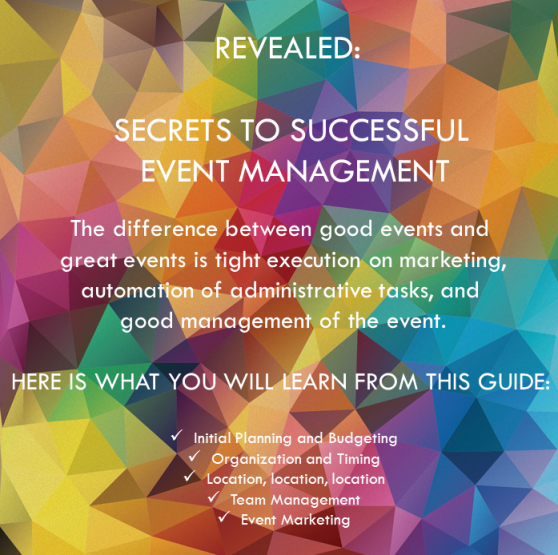
When planning a meeting overseas—or hosting a group of international executives—there are subtle, yet important, social cues to keep in mind. Here are tips for executing meetings that show proper respect for cross-cultural nuances.
1. Know your audience.
As with any event, knowing your audience is key when planning an international meeting. “A good rule of thumb when hosting any meeting—regardless of the culture or the location—is to know your audience,” says Andrew Flack, vice president of global marketing for Hilton Worldwide. “If your audience is culturally diverse, it's important to understand and respect their customs to ensure the meeting meets its objectives.”
2. Do your research—and ask lots of questions.
Flack stresses the importance of researching cultural customs before planning a cross-cultural meeting and ensuring that all meeting attendees have been brought up to speed. “Cultural training needs should be determined in the planning stage and evaluated based on the meeting attendee,” he says. However, a specific company's culture should also be taken into account. “No audience can be generalized or stereotyped,” he says. “To ensure meeting professionals customize each event based on their client's specific objectives and audience, it's important that they develop a relationship with the host and ask the right questions in the planning stage.”
3. Respect tradition.
While asking questions is encouraged, it's also key to know the enduring business traditions of different cultures. “While preferences in meeting details could change based on advances in technology, location, or diversity of the meeting audience, the sentiment of the custom will remain,” Flack says. “For instance, it's important to acknowledge a Chinese attendee's business card—and receive it with two hands when it's presented.”
And while planners may have researched customs prior to an event, they should be flexible in case of surprises. Will Milligan, owner of Will Milligan Events, has hosted meetings for international groups in the D.C. area. “A unique cultural experience occurred during a lunch at a five-star hotel in Washington, when a former government official from Asia insisted on paying a very large lunch bill all in cash kept in a handbag,” he says.
4. Stay flexible.
Different cultures have different meeting customs, which may or may not resemble the habits planners are used to. “Flexibility is key when considering start times, size of the delegation or group, and protocol seating” for international events, Milligan points out. “Inevitably some groups run very late, others bring extra guests, and some like to keep official remarks short and and spend more time in casual conversation and interaction.”
5. Take food and beverage, environment, and group dynamics into account.
To better understand international customs, Hilton Worldwide asked its team of meetings and events pros from across the globe to provide tips on conducting successful face-to-face meetings in their respective markets. The survey tapped into food and beverage, meeting environment, and group dynamics. Some tips that emerged: In Australia, it's considered gauche to discuss business at a meal until the main course is served. (During the appetizer course, it's typical to make introductions and set the agenda, but real business talk doesn't begin until later.) In Japan, seating position is crucial at a meeting, and attendees are placed according to their status. Seating cards could be key for Japanese meetings. And for meetings in the Middle East, the Hilton team determined that planners should consider placing a Koran or prayer mat in the center of a meeting space. Another tip: in the United States, millennial meeting guests notice the quality of coffee or tea at meetings, so choosing a higher-end option could be a wise investment.
6. Don't underestimate the power of a good meal.
Milligan says that standards for event fare and wining-and-dining scenarios have been elevated across the globe. “Whether it be a first-class dining experience for Russian oil executives, a fine Bordeaux [wine] for Chinese businessmen, or the best seafood restaurant for a Kurdish delegation, [all meeting attendees] value efficient service, private settings, and menu items not readily available in their home countries,” he says.
7. A meeting should reflect the customs of its attendees.
Say organizers are planning a meeting in the United States for a group of executives from China. Which area's customs—China's, or the host country's—should inform the meeting's design? “The success of a meeting depends on the output from the meeting attendees, so the attendee and their customs and preferences should be considered first and foremost,” Flack says. “That said, there are also creative ways that meeting professionals remain culturally appropriate to the attendee, while also highlighting local customs.” One common way to incorporate local customs? Design a menu that reflects the best offerings of the city the meeting takes place in.
8. In-person meetings are almost universally preferred.
Hilton Worldwide recently commissioned a survey across the United States, the United Kingdom, and China of white-collar workers ages 18 and up. The survey's results “confirmed that business professionals prefer face-to-face meetings over alternative communication methods, such as video conference, email, or phone calls,” Flack says. “And respondents agreed that in-person meetings are typically set up either to achieve a business goal or reach a decision.” Milligan holds all his cross-cultural meetings in person. “We find that body language and personal contact during international client events is key to the success of the event and would be lost through virtual meetings,” he says.
Source: BizBash
8 Things Planners Should Know About International Meetings
When planning a meeting overseas—or hosting a group of international executives—there are subtle, yet important, social cues to keep i...

















